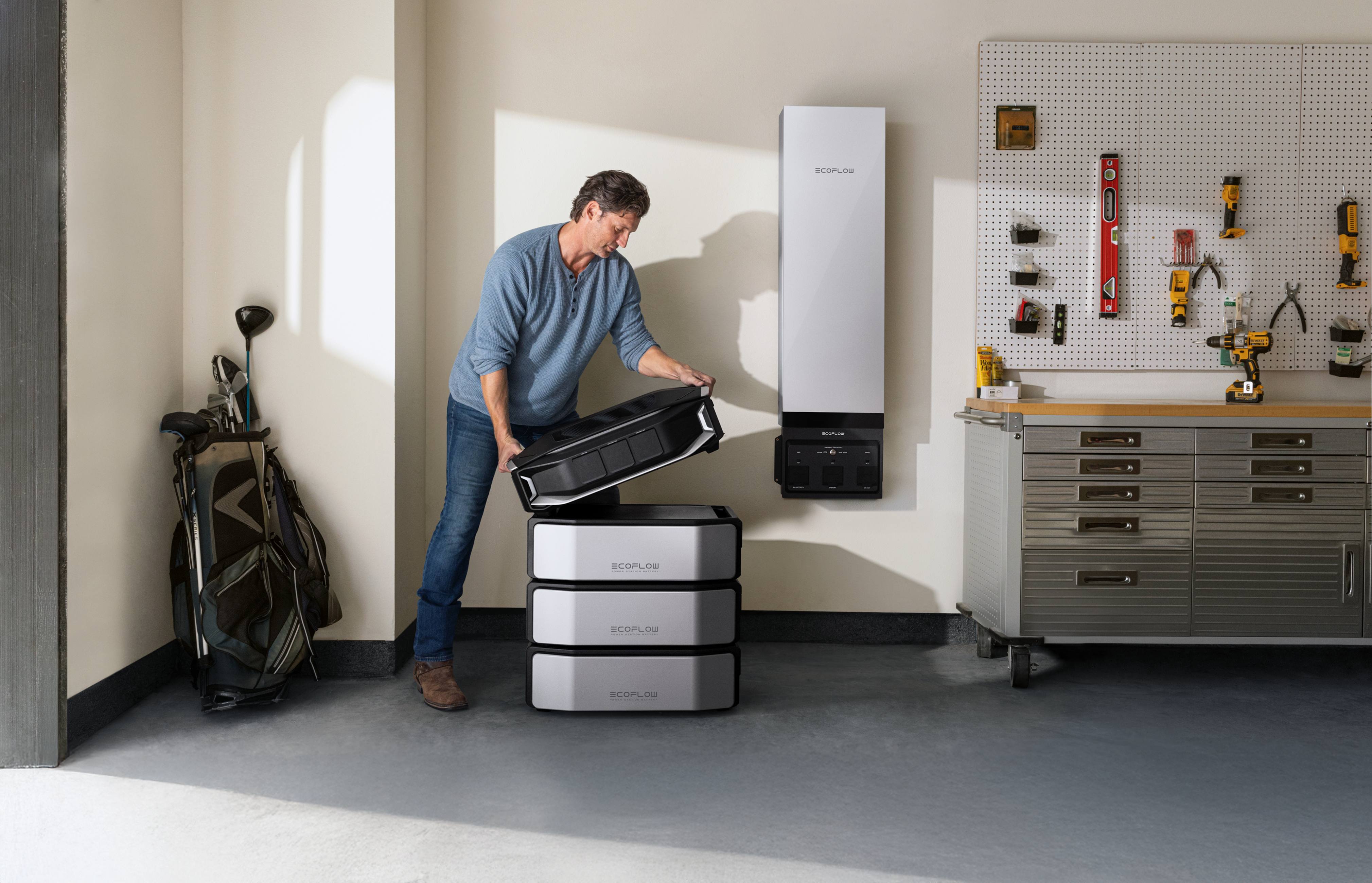EV vs. ESS Battery: What's the Real Difference?
Power storage systems in homes and electric cars are changing the way we use electricity every day. Both use new battery technology, but they're made to do very different things. Being aware of these changes can help you make better decisions about the energy needs of your car and home.
Two Battery Types, Two Different Jobs
EV Batteries: Built for the Road
The motor in your electric car is powered by an EV battery. These lithium-ion packs can be charged and release power when you step on the "go fast" pedal. Since there is no gas pedal, let's call it that. As you speed up, cruise along the highway, and use that cool regenerative stopping feature that charges your batteries as you slow down, they have to be able to handle some pretty rough treatment.
These days, most EV batteries can hold 40 kWh to 100 kWh of power. When you speed up, they drain quickly, but when you stop to charge, they charge quickly. DC fast charging can put out between 50 and 350 kW.
ESS Batteries: Your Home's Energy Backup
Energy storage systems, or ESS, do things in a very different way. These set batteries can store electricity for your home, your business, or even the main power grid. ESS batteries can be charged with cheap power from the grid or solar panels. When you need them, you can use the power that you charged them with.
They are made to last for a long time and thousands of charging and recharging cycles, even if the roads are rough, there are accidents, or it's very hot.
How They Deliver Power
EVs: Quick and Powerful
The main difference between ESS and EV batteries is? How fast they dump power is what matters. Batteries for EVs are like sprinters. When you press that pedal, they need to send out a lot of power in a matter of seconds. If you floor it, your battery better give you power right away, or you'll get smoked at the lights.
Everything is affected by speed, even how well the battery works and how cool the car is. Stress rises when you charge quickly. Like getting your phone 80% charged in 20 minutes from 10% charged. That's the same as quickly eating a five-course dinner. Both the cells and the cooling system in your battery must be very strong to handle that much power.
ESS: Steady and Reliable
Home energy batteries care more about total capacity and efficiency than rapid discharge. An ESS battery charges and discharges at a calm 3-5 kW throughout the day. The goal is storing as much energy as possible while wasting as little as possible.
This steady approach is easier on the battery and helps it last longer. ESS batteries follow predictable patterns. They discharge during morning and evening peak hours, then recharge with solar during the day.
Quick Comparison
| Feature | EV Battery | ESS Battery |
| Primary Use | Makes your car go vroom (silently) | Sits in your garage like a good battery should |
| Typical Capacity | 40-100+ kWh | 10-60 kWh (expandable) |
| Power Output | High (50-350 kW fast charging) | Moderate (3-5 kW) |
| Discharge Pattern | Rapid, fluctuating | Steady, predictable |
| Operating Environment | Extreme (gets shaken, baked, frozen, and occasionally crashed) | Controlled (chills indoors like a couch potato) |
| Lifespan | 8-10 years / 100,000-150,000 miles | 10-15 years / 4,000-10,000 cycles |
| Cooling System | Active liquid cooling | Passive air cooling |
| Cell Chemistry | NMC or NCA (high performance) | LFP (safety & longevity) |
| Installation | Integrated into vehicle chassis | Wall-mounted or modular |
| Replacement Cost | $5,000-$20,000 | $8,000-$15,000 (system) |
How Long Do They Last?
EV Battery Lifespan
The guarantee on most EV batteries lasts for 8 to 10 years or 100,000 to 150,000 miles. They last longer in real life most of the time. Many people can still do 80% to 90% of what they can do after ten years.
But driving too fast, driving on rough terrain, and temperatures that are too hot or too cold all speed up loss of functionality. The battery is put under more stress when conditions and power levels change all the time than when the batteries stay in one place.
ESS Battery Longevity
Most ESS batteries can be fully charged 4,000 to 10,000 times, which is about 10 to 15 years of daily use. They last longer because they are in a stable climate and are charged in the best way. Since these systems don't cause road vibrations or crash risks, they keep working well for years.
Because the charging patterns are consistent, it's easy to guess when they'll wear out and plan to replace them. Because they are so reliable, ESS batteries are great for being energy independent for a long time.


Design Differences
EVs: Compact and Protected
EV batteries are stowed low in the car's frame, often making a platform under the seats that looks like a skateboard. Lowering the center of gravity makes it easier to control and keeps the battery safe in case of a crash.
These battery packs are small, sealed units that are made to withstand drops and water. When room is limited, you have to get the most energy into the smallest area possible. Every part has been tweaked to make it lighter without lowering safety or efficiency.
ESS: Flexible and Expandable
There is a lot more room for storage in homes. You can place ESS batteries on walls or floors, or they come in modular forms that can be expanded as your energy needs change. Their cases are made so that they can breathe, be easily maintained, and connect to your home's power system. They are not designed to protect against drops.
This gives you the freedom to change the size based on how much energy you use and how much space you have. When you add more solar panels or your family's needs change, you can add on to a modular home.
Keeping Cool
Active Cooling for Cars
EV batteries make a lot of heat when they are charged quickly and sped up a lot. Most use glycol flowing through tubes around the cells to cool them down. No matter what the weather is like outside or how fast you're moving, this active cooling keeps things between 20°C and 40°C.
The cooling system is very important to keep the car from getting too hot when fast charging twice in a row or on a long highway drive. When cooling isn't enough, efficiency goes down and danger levels rise.
Simple Cooling for Homes
Air cooling or passive heat dissipation often keeps an ESS battery cold when it remains stationary. The reason behind this is that they produce less heat due to their slower charging rate. Keeping them inside maintains a constant temperature. With this simpler approach, not only is everything secure, but it's also much easier to maintain.
Most of the problems that car batteries have with heat are fixed by the controlled environment inside. This means that cheaper ways to cool them down are possible.


Battery Chemistry
High-Performance Chemistry for Vehicles
Both types use lithium-ion tech, but with different chemical recipes. EV batteries often use nickel manganese cobalt (NMC) or nickel cobalt aluminum (NCA) chemistry. These formulas deliver high energy density and power output for better performance: longer range and faster acceleration.
The chemistry balances energy capacity, charging speed, and weight to maximize range and performance. These cells go through rigorous testing to make sure they can handle daily driving demands.
Stable Chemistry for Energy Storage
Energy storage systems increasingly use lithium iron phosphate (LFP) cells. LFP has lower energy density than NMC, but it's safer, lasts longer, and handles heat better. For stationary use, these traits matter more than maximum range.
Some advanced whole home battery systems now use EV-grade battery cells, bringing automotive performance and reliability to home energy storage. The DELTA Pro Ultra X, for example, uses EV-grade full-tab LFP cells with industry-first technology that delivers higher capacity and 25% less energy loss than average. This crossover shows how quality standards are converging. The tough demands of automotive use are making home energy systems more durable and safe.
Safety Features
Crash-Resistant Car Design
Car batteries face unique safety challenges. Crashes can damage cells and potentially cause thermal runaway, a chain reaction where overheating spreads between cells. Multiple safety systems monitor for problems and can isolate damaged sections or suppress fires with integrated cooling.
The battery management system constantly watches temperature, voltage, and current to ensure safe operation. Structural reinforcements protect the pack during collisions from any angle.
Fire Prevention at Home
ESS batteries hold plenty of energy, but they work in stable, controlled spaces where physical dangers are minimal. Thicker walls between components and more room between cells help stop any overheating from spreading.
Local building codes set clear rules for safe home installation, like requiring separate disconnect switches and proper airflow. Without any collision risks to worry about, safety features concentrate on protecting electrical systems and preventing fires. Today's systems include constant monitoring and layered safeguards that spot issues early and shut down problem areas before they can impact the rest of the battery.
Cost Breakdown
EV Battery Replacement
EV batteries will set you back $5,000-$20,000. That's basically 30-40% of what your whole car costs. Ouch. The good news? Prices keep dropping as lithium gets cheaper and factories crank out more batteries. Still, if you're planning to keep your ride for the long haul, battery replacement is something to budget for (even though many batteries actually outlive the cars, which is kind of hilarious).
As prices keep falling, EVs are finally giving gas guzzlers a run for their money in total ownership costs.
Home Energy Storage Economics
It costs between $8,000 and $15,000 to install a normal home battery system. It's cool that government refunds and energy programs often help pay for it. You can save money on energy costs and keep the lights on during blackouts with ESS batteries. On the other hand, car batteries are going out of style faster than old jokes.
Live somewhere with crazy high electricity rates, time-of-use pricing, or frequent outages? You'll see returns even faster. Most homeowners break even in 7-12 years just from lower energy bills. Modern whole home systems start at 12kWh and grow with your needs. The DELTA Pro Ultra X, for instance, can scale up to 60kWh per unit. That's enough juice to keep your Netflix binge going strong during extended outages.
The Future of Battery Tech
ESS batteries and EV batteries are used for different things in our energy system. For moving around, car batteries focus on power and small size, while for stationary use, energy storage systems focus on volume and long life. As technology improves, both options get safer, more efficient, and more affordable. This means that everyone can use clean transportation and reliable home power.